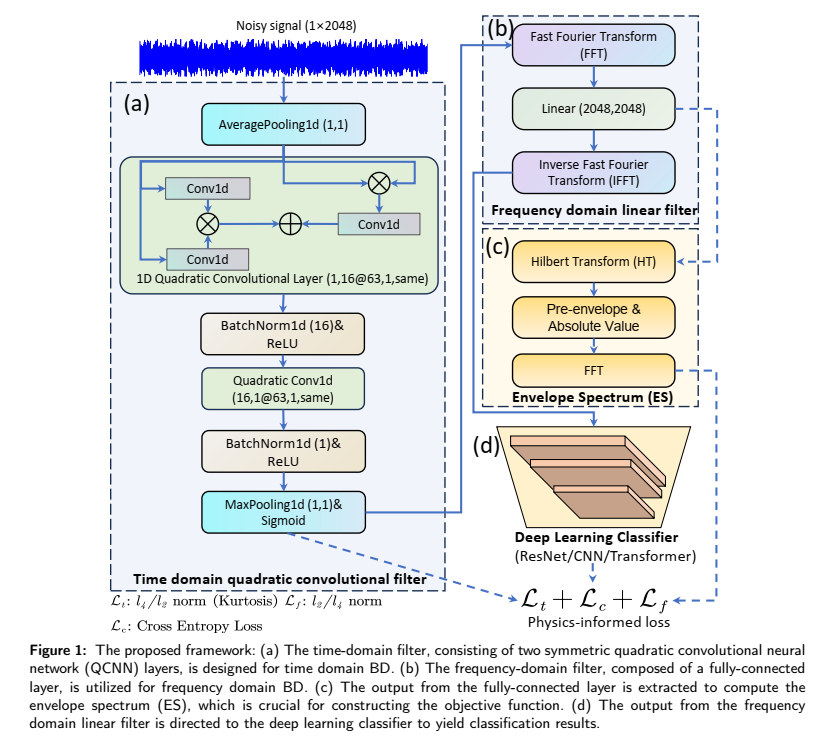Classifier-guided neural blind deconvolution: a physics-informed denoising module for bearing fault diagnosis under heavy noise
Blind deconvolution (BD) has been demonstrated as an efficacious approach for extracting bearing fault-specific features from vibration signals under strong background noise. Despite BD's desirable feature in adaptability and mathematical interpretability, a significant challenge persists: How to effectively integrate BD with fault-diagnosing classifiers? This issue arises because the traditional BD method is solely designed for feature extraction with its own optimizer and objective function. When BD is combined with downstream deep learning classifiers, the different learning objectives will be in conflict. To address this problem, this paper introduces classifier-guided BD (ClassBD) for joint learning of BD-based feature extraction and deep learning-based fault classification. Firstly, we present a time and frequency neural BD that employs neural networks to implement conventional BD, thereby facilitating the seamless integration of BD and the deep learning classifier for co-optimization of model parameters. Subsequently, we develop a unified framework to use a deep learning classifier to guide the learning of BD filters. In addition, we devise a physics-informed loss function composed of kurtosis, $l_2/l_4$ norm, and a cross-entropy loss to jointly optimize the BD filters and deep learning classifier. Consequently, the fault labels provide useful information to direct BD to extract features that distinguish classes amidst strong noise. To the best of our knowledge, this is the first of its kind that BD is successfully applied to bearing fault diagnosis. Experimental results from three datasets demonstrate that ClassBD outperforms other state-of-the-art methods under noisy conditions.
PDF Abstract

